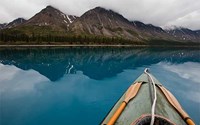- Lesson Plan (111)
- Field Trips (45)
- Distance Learning (20)
- Student Activities (20)
- Other Education Materials (5)
- Science Labs (3)
- Guest Speakers (2)
- Media for Loan (1)
- Online Galleries (1)
- Teacher Reference Materials (1)
- Teacher Workshops & Other Programs (1)
- Science (176)
- Social Studies (50)
- Literacy and Language Arts (20)
- Math (17)
- 6-8.RST.4 (7)
- 6-8.RST.7 (7)
- 4.L.4 (6)
- 4.RI.1 (6)
- 4.RI.3 (5)
- 5.L.4 (5)
- 6-8.RST.9 (5)
- 9-10.RST.4 (5)
- 11-12.RST.4 (4)
- Show More ...
Showing 208 results for water testing ...
Test the Waters - High School
Test the Waters - Middle School
Seeking Freedom in The Bluegrass
What Do Salmon Need To Survive?
- Type: Lesson Plan
- Grade Levels: Lower Elementary: Pre-Kindergarten through Second Grade
Students will be able to determine if salmon raised at school will survive in a local water source by testing conditions.
What's in the Water?
- Type: Lesson Plan
- Grade Levels: High School: Ninth Grade through Twelfth Grade

Water quality is measured using many physical, chemical, and biological assessments. In this lesson, introduce your students to five water chemistry tests. Students will become familiar with pH, nitrates, phosphates, dissolved oxygen and turbidity and their relationship to the Cuyahoga River Watershed. They will begin to understand acceptable test value ranges, make connections between water quality and the biological community and become familiar with the causes of poor water quality.
How Clear Is the Water?
- Type: Lesson Plan
- Grade Levels: High School: Ninth Grade through Twelfth Grade

In this lesson students will test their knowledge of ecosystems and the qualities necessary to sustain life by creating Secchi disks, testing turbidity (water clarity), and making predictions about the habitat that might exist. This fun, hands-on lesson allows students to be the scientist and make predictions based on their findings in their lab reports.
Watching the Watershed
- Type: Distance Learning
- Grade Levels: Upper Elementary: Third Grade through Fifth Grade
We’ll use a model of a watershed to investigate how water moves through our landscape and have a chance to make our own model to test in the classroom.
Explore the Universe
- Type: Science Labs
- Grade Levels: Middle School: Sixth Grade through Eighth Grade

Solving this space mystery will help students understand the fundamentals of the scientific method by having them do background research, formulate a rudimentary hypothesis, test the hypothesis using a physical model the class constructs, evaluate and report the results of that test, and apply their findings to other objects to test their hypothesis’ ability to predict outcomes.
Climate Science in Focus (Evaluations)
The Human Impact on the Living Planet Virtual Field Trip
- Type: Distance Learning
- Grade Levels: Middle School: Sixth Grade through Eighth Grade

Tracing the water cycle, from precipitation to surface water runoff, students investigate how humans’ impact the health of the environment. Through stories of everyday activities, students make predictions, conduct observations, and formulate conclusions as our staff conduct live experiments. After observing the test of a simple water filter, students propose changes to improve the design and discuss ways in which their community can reduce its impact on Earth’s resources.
Cartography: Map Making and Red River Campaign of 1864 Battle Plans
Protecting the Water
- Type: Field Trips
- Grade Levels: Middle School: Sixth Grade through Eighth Grade

This program explores the ways that Hot Springs National Park protects the natural water cycle and harnesses the water for human use. Students will explore different challenges from habitat protection to engineering that the park faces in protecting the 143-degree thermal water for public use. Designed for 5th and 6th grade Earth Science and Engineering. Advanced programs may be used for High School programs.
The Work of Water
Is the Water Safe?
- Type: Student Activities
- Grade Levels: Upper Elementary: Third Grade through Fifth Grade
A brief student activity to help students realize that taste and smell aren't always good indicators of pollution.
Water Cycle
- Type: Field Trips
- Grade Levels: Upper Elementary: Third Grade through Fifth Grade

Students hear a story and dance to a water cycle music video. While visiting a wetlands ecosystem they act out the process of erosion in different environments, and participate in a relay where they pretend to be agents of evaporation and precipitation. Students imagine they experience the water cycle first hand and write a poem about it. Afterwards, each student creates a regional drawing of the water cycle.
What’s in the Water?
- Type: Lesson Plan
- Grade Levels: Upper Elementary: Third Grade through Fifth Grade
Determine effects people have on the water in the environment and how to protect this necessary natural resource. Meets Kentucky 3rd-5th grade science standards. This lesson was created by Kentucky teachers as a part of the History and Science Explore Project.
Wandering the Watershed Menu 5: Hybrid B: Design Challenge & Design Visit
- Grade Levels: Upper Elementary: Third Grade through Fifth Grade
This hybrid track has students explore watersheds through prepared video. The students will then complete the design challenge in the classroom and visit the Lakeshore in the spring to test their design. (FREE design kits provided by the National Park Foundation.)
"The Water Watch" Water: 4-6 Grade
- Type: Lesson Plan
- Grade Levels: Upper Elementary: Third Grade through Fifth Grade

The student will be able to: a) list two reasons why water conservation is necessary for the preservation of the Everglades, b) list two ways in which they can increase community involvement in water conservation, and c) produce a petition which lists ways to conserve water and get at least one hundred signatures on their petition.
"Water Poetry" Water: 4-6 Grade
- Type: Field Trips
- Grade Levels: Upper Elementary: Third Grade through Fifth Grade








